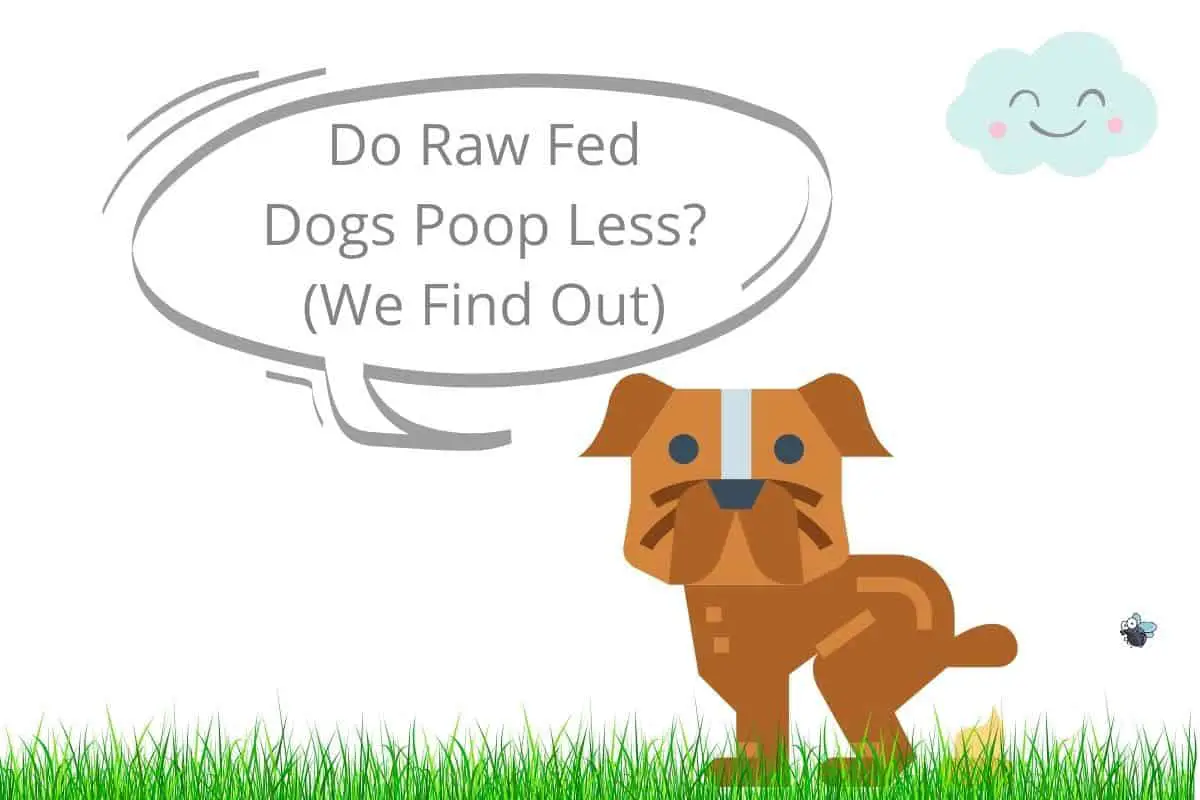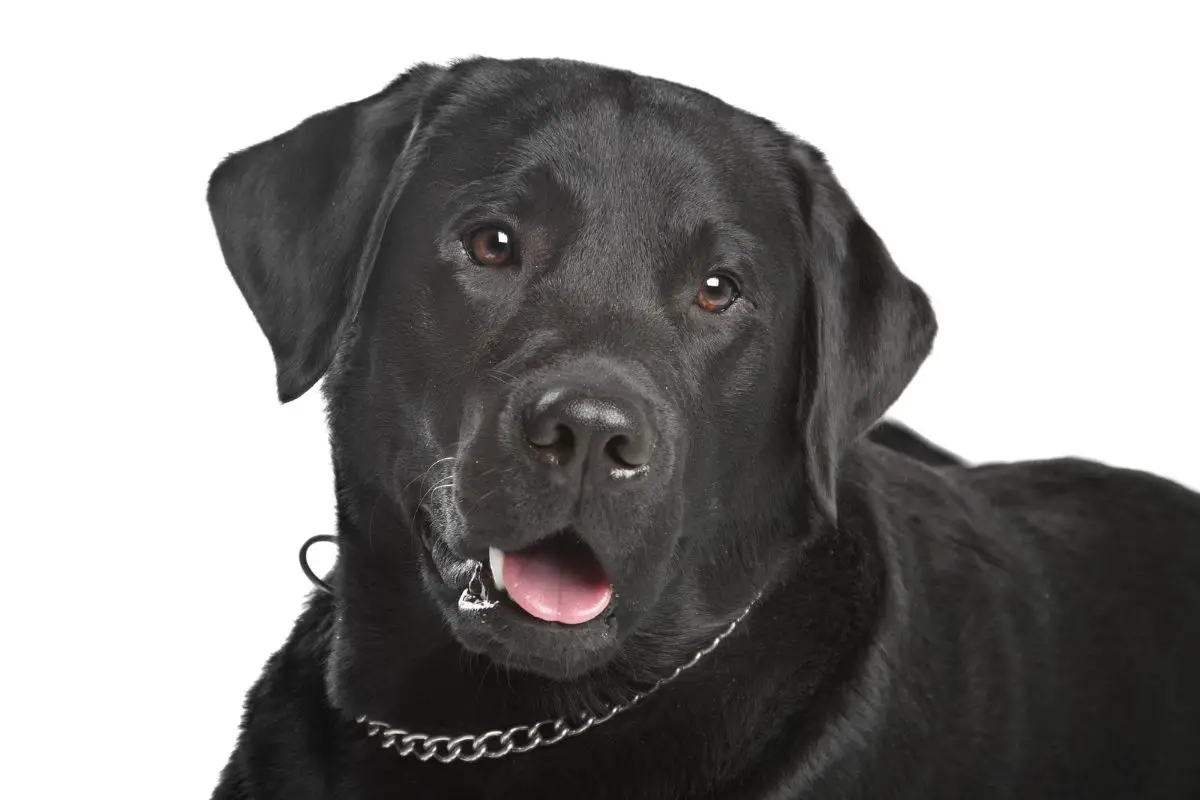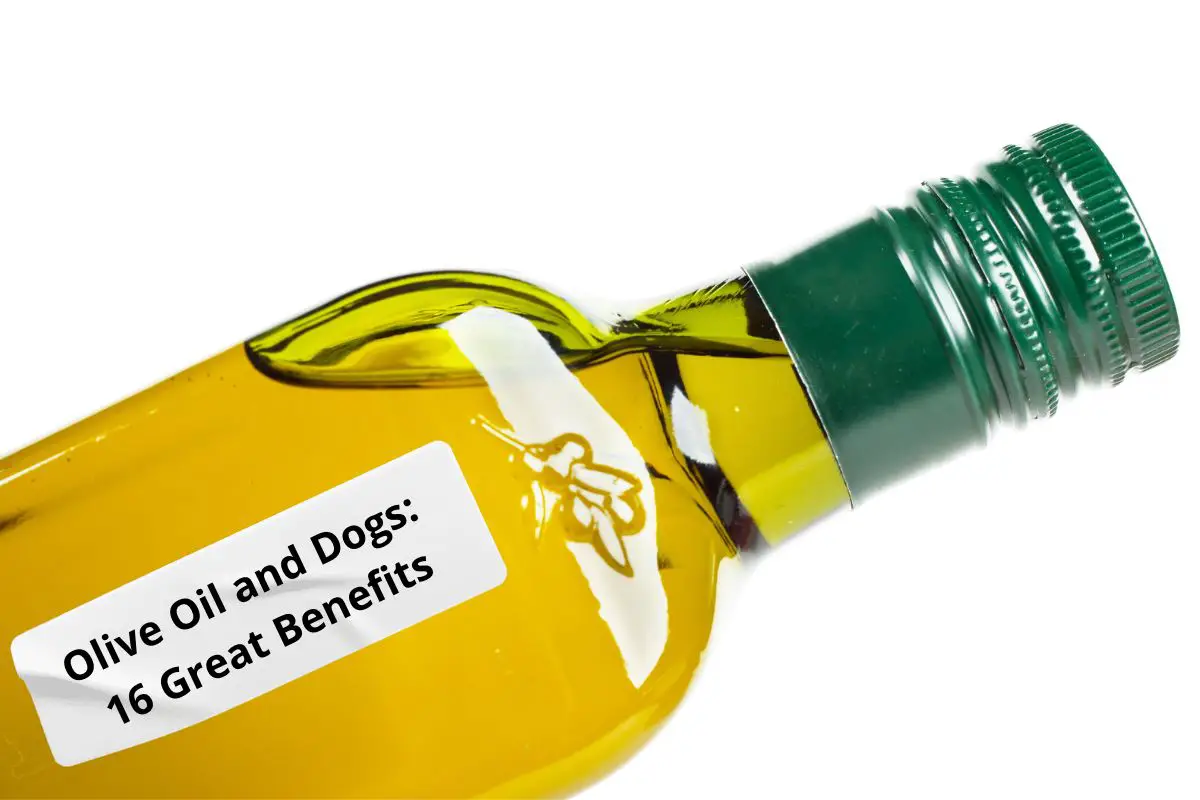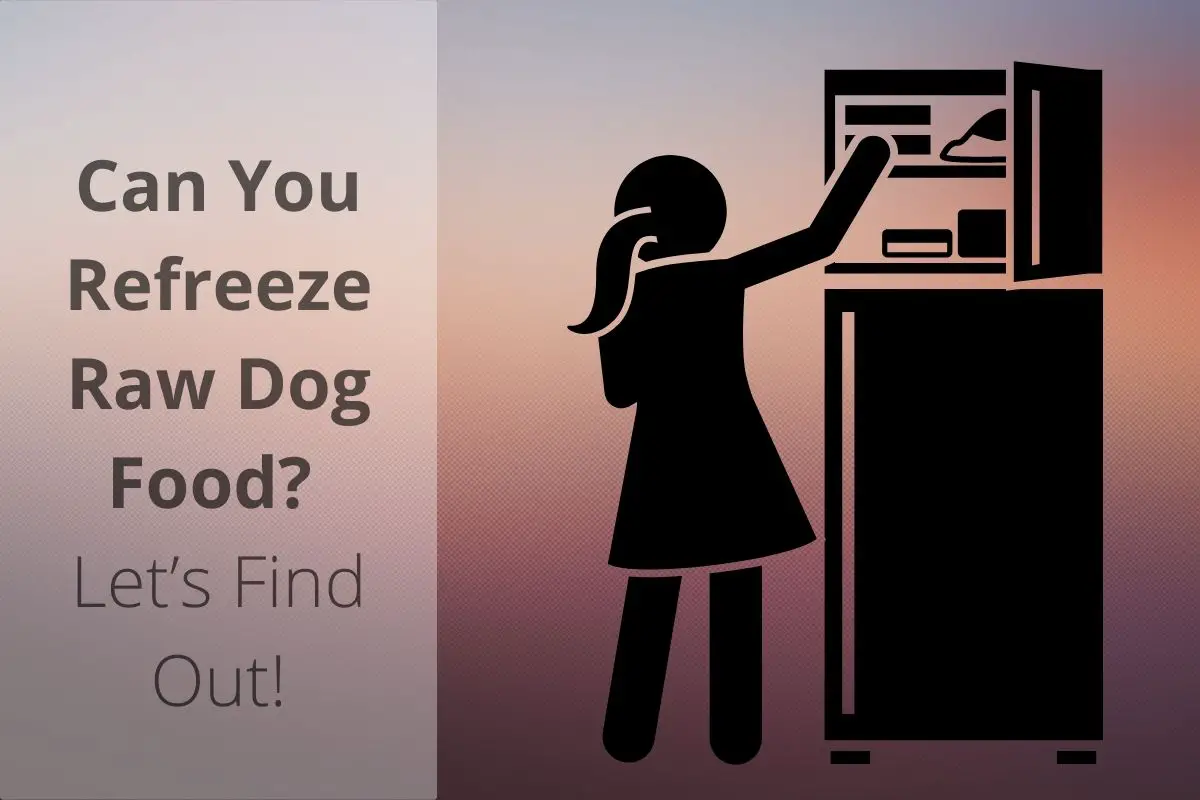This post contains affiliate links.
You’re thinking about switching your canine to a raw diet, but you’re not sure if it’s the best choice. You heard several people and some friends claim that raw-fed dogs poop less, so that’s a good bonus for you while keeping your dog healthy. However, is it really true, and is that a good thing?
Raw fed dogs do tend to poop less because they are able to absorb their food better. The natural, wholesome ingredients in most raw food mixtures enable their bodies to absorb more vitamins and minerals, excrete fewer unnecessary waste substances, and produce smaller, less foul-smelling poops.
This article will tackle everything you need to know about dog excretions and how a raw diet affects them. It will also discuss some common questions about raw feeding and provide you with a few helpful natural feeding tips.
Table of Contents
What Happens When a Dog Follows a Raw Diet?
When a dog follows a raw diet, it influences many aspects of its day-to-day life. This includes a dog’s energy levels, satiation, health, and even poop. Generally, dogs on raw diets benefit from improved digestion, a healthier weight, higher energy levels, and less poop.
Raw Fed Dogs Undergo Better Digestion
Raw food means more absorbable ingredients compared to typical dog food. In turn, this allows your dog to easily digest its meals and absorb the food’s nutrients. When this happens, you’ll possess a dog that experiences less gas and poops less. Most of the time, your raw fed dog’s poop also barely showcases any odor.
Raw Fed Dogs Boast More Energy
You can observe higher energy levels in your dog when you’re following a raw diet. This has something to do with easy nutrient absorption. When your dog’s gut absorbs its food with ease, your dog’s body can quickly and abundantly convert food to energy. Doing so also results in a healthier physique.
Raw Fed Dogs Don’t Poop As Much or As Often
As mentioned earlier, better digestion equates to less poop because almost every part of the raw dog food easily breaks down within your dog’s gut. Since fecal matter is simply waste material, your dog will poop less because it won’t have wasted materials in a raw diet. Similarly, you can expect odorless poops from a naturally fed dog. You may also witness smaller-sized dog poops and cleaner anal sacs during a raw diet.
Drawbacks of Feeding Raw
On the other hand, a few drawbacks of raw feeding include less satiation and increased hunger, diarrhea, or constipation. These issues often arise at the start of a raw diet, just when your dog switches from regular kibble to natural raw meals.
Your dog may experience less satiation because it’s not used to a raw diet, and a natural diet often makes your dog feel that it’s getting less than it used to eat. Meanwhile, diarrhea or constipation occurs when there’s an imbalance between your raw ingredients. You can quickly fix that through trial and error or by consulting your vet.
Why Raw Fed Dogs Poop Less
Besides pooping less, raw fed dogs also produce different-looking poops. When raw fed, your dog only excretes approximately 2% to 7% of its food since your dog almost entirely digests animal fat, meat, and offal. Meanwhile, when feeding fruits and vegetables to your dog, you can expect about 30% to 60% of the fruit or vegetable converted to waste.
When you compare the results of waste excrement percentage from raw feeding to kibble feeding, you’ll notice that your dog benefits well from a raw diet. With a raw diet, your dog can absorb all the nutrients from its food and grant you less poop to clean. Therefore, you’ll see 60% to 80% of the food turned to waste on a kibble diet.
Other Poop Improvements in Raw Fed Dogs
You’ll also notice that your dog’s poop breaks down faster than usual. This is because your dog’s waste on a raw diet barely contains any chemicals compared to a standard kibble diet. Hence, if your dog poops on your lawn and you don’t really feel like picking it up, you can get away with leaving it there. You’ll see that it disintegrates harmlessly within a day or two.
In the same vein, you can expect dog urine that doesn’t harm your lawn since it possesses fewer chemicals as well. This means you don’t need to worry about damaging your garden or grass with your dog’s pee.
Of course, you still need to practice mindfulness when your dog pees or poops outside: you’ll need to pick them up. And again, the bright side to dogs on raw diets is that you’ll have less poop to pick up. You also don’t need to anticipate a smelly poop anymore.
A Raw Fed Diet Can Change Dogs’ Poop Colors
If you’re concerned about what’s normal and what’s not when it comes to dog poop on a raw-fed diet, this section will discuss poop appearance. Remember that your raw food ingredients affect your dog’s poop color and firmness.
What Yellow, Green, or Orange Dog Poop Mean
If your raw fed dog’s poop turns yellow, you’ll find raw poultry like chicken and turkey as the culprits. You’ll often notice this happening when you’re transitioning your dog from a kibble diet to a raw diet.
Meanwhile, orange or green poop occurs when you feed your dog food high in orange or green colors, like carrots or broccoli. Green poop may also indicate that your dog ate plenty of grass or that your dog’s food went past its intestines too fast. However, note that this can turn into a health concern, such as a liver issue if it keeps occurring.
What Brown Shades of Dog Poop Indicate
Beige-colored or whitish-brown dog poop from a raw fed dog indicates an excess of raw bone in your dog’s diet. These poops often appear grainy, odorless, and firm. You’ll also notice that they turn pale and crumble in a few days. You can quickly remedy this by lowering the bone content of your dog’s food. Meanwhile, regular brown dog poop is normal within dogs. When it turns hard within days, it indicates healthy poop that decomposes.
On the other hand, dark brown or dark black stools shouldn’t pose too much concern if you’re feeding your dog plenty of red meat or blood. Dark brown poop comes from an excess of red meat, while dark black poop originates from bloody food like spleen and liver. However, practice caution when your raw-fed dog constantly poops in black. A constant stinky black stool could indicate internal bleeding.
Frequently Asked Questions About Raw Fed Dog Poop
Of course, most dog owners question other things when it comes to their raw fed dog’s poop. Some of these include a naturally-fed dog’s poop size and odor, stomach issues like diarrhea or constipation, and even a dog’s appetite for water.
Do Raw Fed Dogs Produce Smaller and Odorless Poop?
Similar to how a raw fed dog poops less, it can also produce smaller poops. When a dog absorbs most of its food in its gut, there isn’t really anything else to poop except for a small percentage of waste products. Likewise, a raw fed dog also produces odorless poop compared to kibble fed dogs.
Do Raw Fed Dogs Drink Less Water?
You may notice that your dog started drinking less water since you transitioned to a raw diet. This is normal. Raw diets often contain high moisture content, whereas kibble contains no moisture. Hence, a raw fed dog doesn’t need to drink as much water as before. They’re already getting it from their raw diet.
If you’re unsure about your dog’s hydration level, check its gums. Pink gums indicate proper hydration, while whitish gums signal dehydration. In that case, use a ceramic bowl or a pet drinking fountain if your dog is picky about drinking water.
Do Raw Fed Dogs Experience Constipation?
You may notice your dog straining as it poops and deduce that it suffers from constipation. This is usually alright as long as your dog passes an ample amount of firm poop. Firm poops help your dog exercise its anal glands, which decreases the chances of developing anal gland infections or an impacted anal gland. However, note that a dog that strains without producing any poop suffers from constipation. It’s best to visit a vet when this happens.
If you notice that your dog’s poop is too firm, you may also need to lower its bone intake. It’s wise to increase organ meat in your dog’s raw meals or mashed pumpkin for fiber to help your dog. Likewise, ensure that your dog drinks an adequate amount of water.
Do Raw Fed Dogs Experience Diarrhea?
One or two loose or liquidated poops don’t necessarily indicate diarrhea. Your dog may produce soft poops to clear its guts of accumulated toxins when you transition into a raw diet. Similarly, the raw meals may contain too much water and result in soft stools for a few days.
On the other hand, ensure that your dog doesn’t have diarrhea by checking the raw food you’re feeding it. Too much fat, salt, and seasonings in a raw diet can cause diarrhea. Likewise, a sudden transition may surprise your dog’s body and result in diarrhea. Diarrhea in naturally-fed dogs may also stem from a lack of raw edible bone in their diet.
If your raw fed dog experiences diarrhea, try avoiding solid foods and stick to broths and soft foods for a while. You can also pull back on the raw food and slowly introduce it to your dog’s diet instead or remove your raw meal’s unnecessary ingredients. More importantly, you can check in with your vet to see if something serious is ongoing.
Best Raw Dog Food
If you want to transition your dog from a kibble diet to a raw diet, you may find yourself confused about where and how to start. You can purchase raw ingredients, but that means you need to handle raw frozen food that can attract bacteria. So, to make things uncomplicated, you can choose to obtain pre-made raw dog meals instead.
Instinct Kibble & Raw Dog Food
You’ll love Instinct Kibble & Raw Dog Food if you want to gently transition your dog from a kibble diet to a raw diet. Instinct’s Kibble & Raw features grain-free dog food with freeze-dried raw pieces and high protein levels. You can choose between chicken, duck, salmon, and beef.
Instinct Raw Boost Mixers
If you don’t want to purchase dog food with raw food, you can start with raw mixers. Instinct Raw Boost Mixers comes in beef, lamb, and chicken flavors. It should work best on dogs seeking variety to their meals and if their owners want to transition them to a raw diet gently.
Stella & Chewy’s Freeze Dried Raw Patties
You can choose Stella & Chewy’s Dinner Patties if you’re ready to raw feed your dog but unsure where to start. It comes in 13 balanced flavors, complete with everything you may need for your dog as a puppy or an adult. It also features all-natural ingredients, minimal processing, added taurine, and no hormone additives.
Basically, with these Dinner Patties, you can give your dog a natural raw meal while conveniently just taking pre-made food out of your freezer. Stella & Chewy’s Patties come in beef, chicken, duck, lamb, rabbit, red meat, turkey, pork, venison, salmon & beef, venison & lamb, beef & salmon, and chicken & salmon versions.
Beneficial Supplements for Healthier Dog Poop
If you feel that your dog needs supplemental support to produce optimal poop, you can use digestive enzymes, probiotics, or slippery elm bark. You can find supplements like Bernie’s Perfect Poop Digestion Supplement, PetHonesty Probiotics, and Zesty Paws Probiotic on Amazon. These contain probiotics and other digestive enzymes to help your dog.
Alternatively, you can opt for supplements like Wonder Labs Slippery Elm Bark Powder and Herbsmith Digestive Support for a more natural approach as you support your dog’s digestion.
Final Thoughts
Raw-fed dogs tend to produce less poop in smaller and odorless batches. Going raw often equates to better food absorption than staying with kibble because raw food mixtures contain more fresh, wholesome ingredients, and essential vitamins and minerals. The better food absorption ultimately results in less poop excreted by your dog.
Sources
- Perfectly Rawsome: ACHIEVE THE PERFECT POO
- Fitdog: IS A RAW FOOD DIET RIGHT FOR YOUR DOG?
- Keep the Tail Wagging: How Many Times a Day Do Raw Fed Dogs Poop?
- Dogs Naturally Magazine: Dog Poo – Let’s Probe Further
- Honey’s Real Dog Food: A few words about something no one likes to mention
- Furchild Pet Nutrition: The Scoop on Poop – Raw vs. Kibble and Underlying Health Problems
- Raw Feeding Advice and Support: All About Poop
Mrdogfood.com is a participant in the Amazon Services LLC Associates Program, an affiliate advertising program designed to provide a means for sites to earn advertising fees by advertising and linking to Amazon.com. We also participate in other affiliate programs which compensate us for referring traffic.







